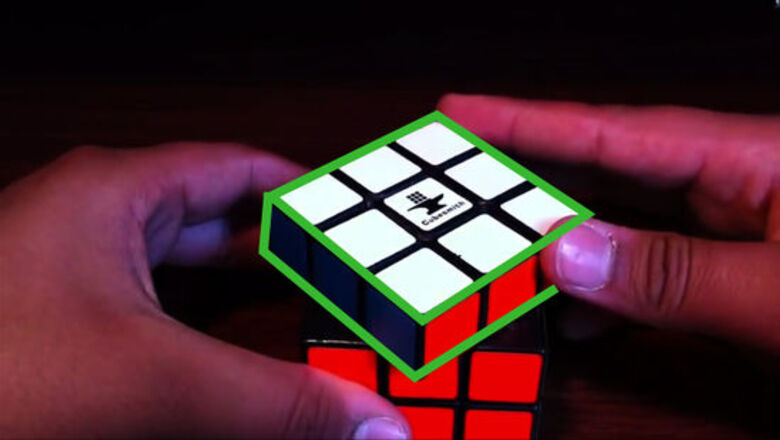
views
Taking the Cube Apart
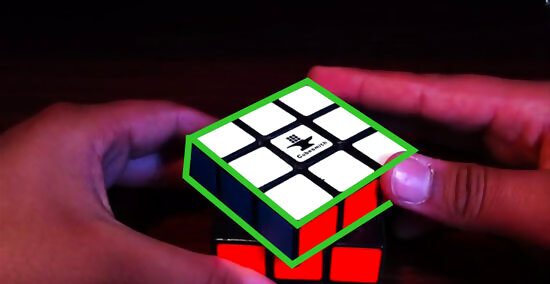
Turn the top layer. It’s easier to remove the pieces of a Rubik’s cube when you have a little more leverage to push it up. By rotating the cube’s top layer 45 degrees, you’ll create enough leverage to make it easier to pry the first piece loose. If you’re not sure that you’ve turned the cube enough, make sure that each corner is approximately halfway between the cube’s ends.
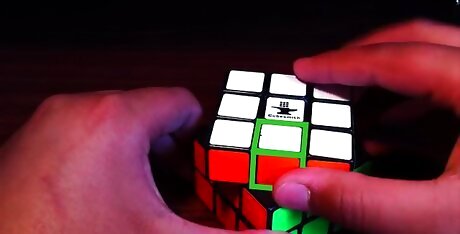
(optional) Slide a screwdriver under an edge piece. The first piece that you should remove from the cube is one of the edge pieces, or the middle piece in each three cubie row. You can try to remove the piece with your fingers, but it’s much easier to slide a flathead screwdriver under it. If you don’t have a screwdriver on hand, a butter knife also works well. If you start with one of the corner pieces instead of an edge piece, you run the risk of breaking the entire Rubik’s cube so it’s not longer functional.
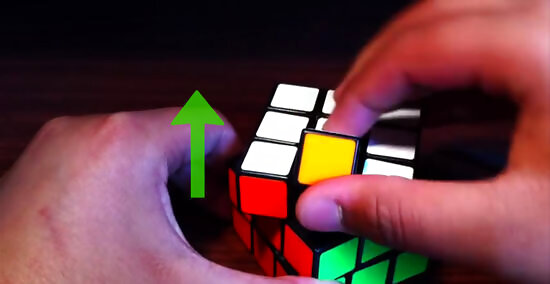
Pry upward. With the screwdriver beneath the edge piece, gently begin to push upward. If you push too hard or try to work too quickly, you may break the plastic. Work slowly until you can feel the piece easily slide out of place. If the piece isn’t coming loose as easily as it should, move the screwdriver beneath it and try to pry it free again.
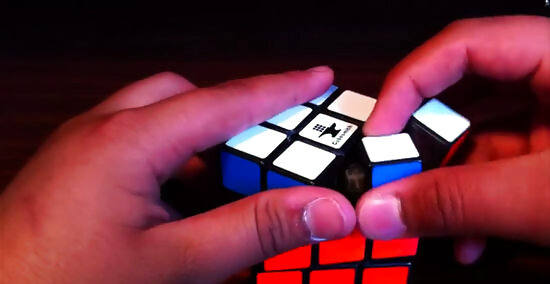
Remove corner pieces. Once the middle or edge piece is free, the corner pieces on either side should easily slide free using just your fingers. If they don’t appear to want to come loose, use the screwdriver beneath the middle or edge piece on the opposite side and pry it free. Once an entire side of cubies are removed, you should be able to remove the rest of the pieces from the top layer with your fingers. Don’t try to remove the very center piece. It is actually connected to five other cubies to function as the cube’s turning mechanism. You need to remove all of the other unattached pieces to free it.
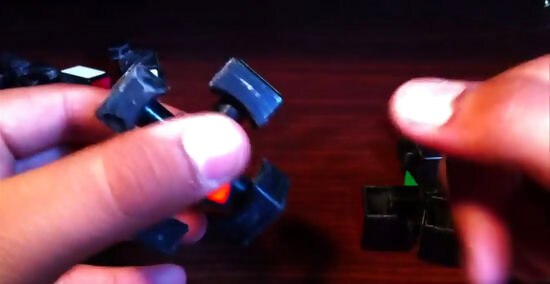
Repeat the process. Once you’ve cleared the top layer of the cube, you can repeat the process for the rest of the cube. You may need to use the screwdriver to remove the middle pieces, but the corner cubies should easily lift out. When you’ve finished disassembling your Rubik’s cube, you should have 12 edge, eight corner pieces, and the inner piece that features six center pieces. It’s a good idea to separate into the cubies in piles of edge and corner pieces to save time when you put the cube back together.
Reassembling the Cube
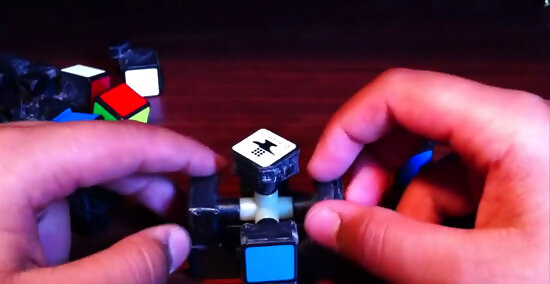
Gather four edge pieces of the same color. Reassembling the first four pieces of a Rubik’s cube is usually the most difficult part of putting it back together. To start find four edge or middle pieces that are all the same color. Set them in place around the cubie on the six-sided inner piece of the same color. Because there’s not much for them to grab onto, you’ll need to hold them in place so they don’t fall out as you rebuild the cube. When you’re reassembling the cube, you should do it in the solved position rather than randomly, which means rebuilding it so each side is full of cubies of the same color. If you reassemble it in a random fashion, the Rubik’s cube may be impossible to solve. To fit the edge pieces in place, it may be necessary to slide them into place on a side other than the matching center cubie and then twist it into place.
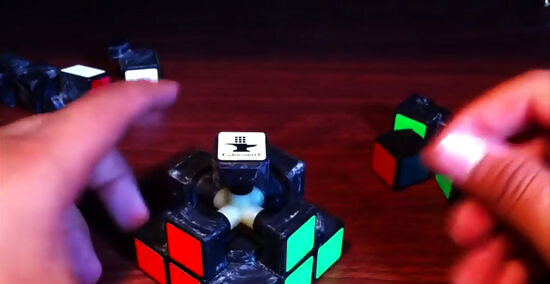
Find four matching corner pieces. In your pile of corners, find two that the match the color of the edge or middle pieces you’ve already reassembled. Slide them into place on the bottom edge of the cube. That way, you can stand the cube up on them to keep the pieces together as you slide the remaining corner cubies into place to complete an entire side of the Rubik’s Cube. As you reassemble, you may need to twist the pieces into place in order to get them fit.
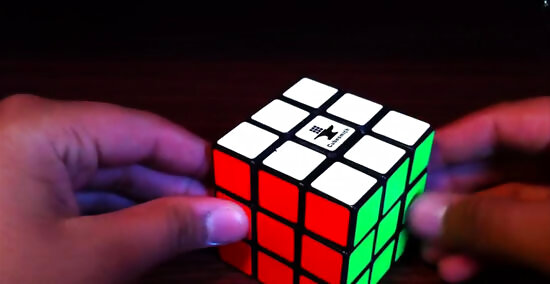
Repeat the process. Once you’ve finished one side of the cube, you can rest it face down on those pieces and go to work on another side. That means choosing four edge pieces in another color and sliding them into place around the center cubie that matches. You shouldn’t have to hold these pieces in place as you add them to the cube because there are other pieces that can anchor them. Continue adding pieces in the same fashion until you’ve completed the cube. When it comes adding the final piece to the cube, you’ll hear a clicking sound that indicates the cubie is firmly in place.
Lubricating the Cube
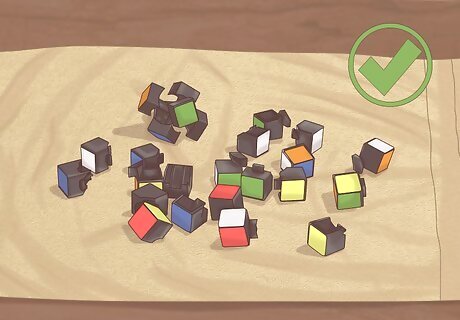
Spread out the pieces. You want to be able to coat all of the cubies from your Rubik’s cube, so it helps to spread them out. That way, all of the inner parts of the pieces will be exposed. However, make sure to lay the pieces on paper towel, a towel, or an old rag in order to protect your work surface in case any of the lubricant splatters or drips. EXPERT TIP Gavin Nelson Gavin Nelson Competitive Rubik's Cuber Gavin Nelson is a world-ranked Rubik's Cube competitor who has held North American Rubik's Cube records. He has competed in over 30 World Cube Association events and has won 4 golds, 19 silvers, and 26 bronzes to his name. Gavin Nelson Gavin Nelson Competitive Rubik's Cuber Gavin Nelson, Competitive Rubik's Cuber, adds, "If you don't want to take the whole thing apart, you can remove one piece and drop the lubricant in, then put the piece back in and rotate all sides."
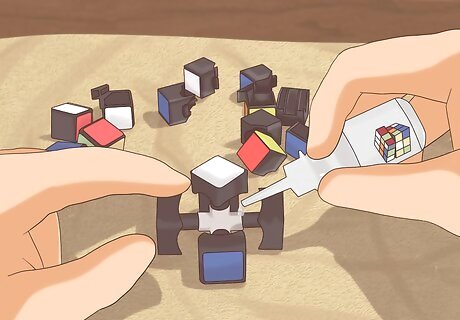
Apply lubricant to inner parts of pieces. There are a variety of lubricants that can help make it easier to turn your cube. Opt for a silicone-based spray or gel -- some are designed specifically for use on Rubik’s cube, so they’re an ideal option. Apply the lubricant to the back side of the pieces where they connect to center piece according to the product instructions. Don’t forget to apply lubricant to all sides of the center piece too. You can purchase generic silicone-based lubricant spray at your local hardware or home improvement store. If you don’t have an silicone lubricant on hand, petroleum jelly can also work.
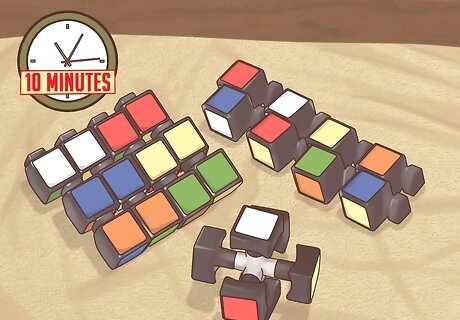
Allow the pieces to dry. After you’ve applied the lubricant, set the pieces down on the colored sticker side. It’s important to allow the cubies to dry for at least 10 minutes to ensure that the lubricant doesn’t make the Rubik’s cube too easy to turn. Once they’re dry, reassemble the cube, and see how much more quickly you can solve it.



















Comments
0 comment